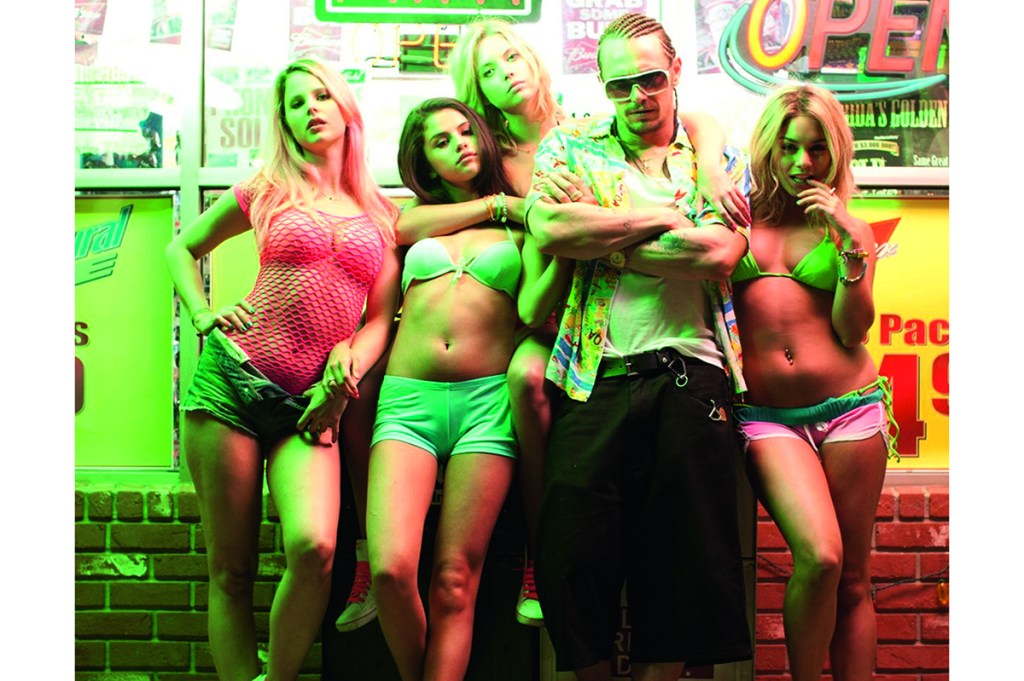I don’t know how I first came across Harmony Korine’s Gummo (1997), but in this cult film about the foibles and joys of small-town life, I found a director who understood the cinematic merits of American seediness. Gummo, which features amateur actors in debauched scenes, hosts a collection of freaks unsurpassed in modern cinema, including skinhead brothers, a boy dressed in a bunny suit (he goes by “Bunny Boy”), and a gay dwarf. Though mostly repulsive, Gummo has a transgressive charm that makes it impossible to turn away.
Like Korine’s Mister Lonely (2007) and Trash Humpers (2009), Gummo is less about plot and theme than feeling and sensibility. It is an aesthetic experience that stylizes grime to capture the essence of characters one hopes not to encounter in real life. Korine documents the weirdos without judgment, and he dares his audience to look closely. That enterprise can read as either urgent and political, or disinterested and even nihilistic. Is Korine indicting the depraved nature of our modern condition, or is he simply a sleazy guy who prefers to wallow in filth? One thinks of the French novelist Michel Houellebecq, whose work also seems to say, “This is nasty, but it’s important that you look at it if you want to understand.” Houellebecq’s main theme is obvious: he’s talking about the decline of the West. Korine is far cagier, but his masterpiece and most commercially successful project, 2013’s Spring Breakers, sheds a glimpse of light on the oeuvre at large.
Spring Breakers, a crime film starring James Franco, Vanessa Hudgens, Selena Gomez, Ashley Benson and Rachel Korine (the wife of the director), depicts a road trip gone disastrously wrong. Before the female leads head down to Florida, broke college students, Brit (Benson) and Candy (Hudgens) get high and rob a restaurant with hammers and fake guns. It’s a shockingly violent scene, especially since that violence is perpetrated by dainty girls — an incongruity that Korine plays up throughout the film. In the getaway car, driven by Catty (Korine), the trio explodes in ecstasy, screaming and throwing money everywhere.
The female characters, like many young people in America, oscillate between states of numbed-out ennui and manic self-destructiveness. Ever since Girls Gone Wild hit the mainstream, the storied spring jaunt down South has functioned as a rite of passage for our nation’s collegians, permitting them to situate themselves on the spectrum of Dionysian self-destruction in the final moments before it becomes socially unacceptable to do so. The trio, along with the film’s moral center, Faith (Gomez), head down to St. Petersburg, Florida, and gleefully join the chorus of crazies.
Spring Breakers was released in 2013, and it dynamically captured the malaise of our nation’s young at that time. But reconsidered nearly a decade later in post-pandemic America, the film is more relevant than ever. Photos of “packed” Florida beaches in March 2020, just weeks after the mysterious plague landed, have been seared into the collective unconscious, kickstarting the long and bitter rivalry between the sunburnt revelers of freedom-loving Florida and the triple-masked homebodies of New York and Boston.
One year later, Spring Break 2021, Miami Beach: a chaotic dystopia. Young Americans from across the country, forcefully numbed out by inane pandemic restrictions on campus, descended on the beach and quickly drank themselves silly. Parked cars were hopped upon; firecrackers and bullets were launched into the air; property of all manner was defaced and destroyed. Students commandeered the city, and they performed the self-destructive theatrics we first saw from the ladies of Spring Breakers.
Yet watching the chaos, one understood instinctively that it couldn’t be blamed solely on pandemic-induced rage. These young Americans faced staggering student loans, middling job prospects and an increasingly stifling culture of conformity. The scenes of destruction that aired on national news were eerily similar to what Korine depicted in Spring Breakers. This particular brand of American delinquency, his camera is saying, is numbed out, but great violence lurks beneath the surface.
In Spring Breakers, when the girls arrive in Florida, they fall into progressively deeper trouble, until they meet “Alien” (Franco), an aspiring rapper and active drug dealer whose motto is, “Bikinis and big booties, that’s what life is about.” The ladies take this ludicrous advice to heart and have their outsized dose of fun, but the wheels begin to come off. It all ends as badly as you’d imagine. One wants to take a shower at the film’s completion. Spring Breakers leaves its viewers with the desire not for a raucous spring break adventure, but for a break from the conditions that made us numb and mad in the first place.
This article was originally published in The Spectator’s May 2022 World edition.


















